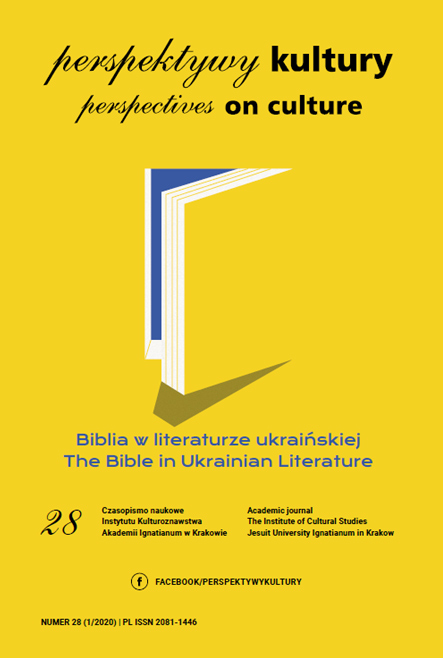Selected Aspects of the Pre- and Post-Match Rituals of Female Football Players
Abstract
Rituals are an interdisciplinary subject. They can carry many meanings and have different values for the person who performs them or believes in superstitions associated with them. Rituals are mysterious and intriguing, and thus more interesting as an area of scientific study. Observation of the sports community shows that ritualization applies not only to the ceremony itself, but also to the behavior and performance of individual players, especially during the pre-match period. This awareness prompted research and discussion on the place/role of rituals in the mental and physical preparation of athletes.
The study included 62 female football players playing in Polish league competitions. They completed a questionnaire called “Rituals in Sport.” The aim of the study was to learn about the ritualized practices of players and their teams. The survey questions also concerned the subjectively felt relationship between rituals and the expected outcome of the match, among other things. The analysis of our findings confirmed that the female footballers’ pre-and post-match practices are ritualized. The scope, diversity, and multiplicity of meanings of the rituals performed by individual players reveal the significance of this interdisciplinary phenomenon.
References
Bergier, J. (2006). Piłka nożna kobiet [Women’s football]. Biała Podlaska: PWSZ.
Brevers, D., Dan, D., & Noel, X. (2011). Sport superstition: Mediation of psychological tension on non-professional sportsmen’s superstitious rituals. Journal of Sport Behavior, 34, 3–24.
Burke, K.L. (2006). An exploratory investigation of superstition, personal control, optimism and pessimism in NCAA Division I intercollegiate student-athletes. Athletic Insight: The Online Journal of Sport Psychology, 8(2), 5–9.
Foster, D.J., Weigand, D.A., & Baines, D. (2006). The effect of removing superstitious behavior and introducing a pre-performance routine on basketball free-throw performance. Journal of Applied Sport Psychology, 18(2), 167–171.
Guillet, E., Sarrazin, P., Fontayne, P., & Brustad, R.J. (2006). Understanding female sport attrition in a stereotypical male sport within the framework of Eccles’s Expectancy—Value Model. Psychology of Women, 30, 358–368.
Jeanes, R. (2011). I’m into high heels and make up but I still love football: Exploring gender identity and football participation with preadolescent girls. Soccer and Society, 12(3), 402–420.
Labbate, M. (2011). Attention, sit, mediate, bow, ready position: Ritualized Dojo pattern or character training? Journal of Asian Martial Arts, 20(1), 81–93.
Lipoński, W. (2004). Rochwist i palant. Studium etnologiczne dawnych sportów i gier ruchowych na tle tradycji europejskiej [Rochwist and palant: Ethnological study of ancient sports and movement games against the background of European tradition]. Poznań: AWF.
Maisonneuve, J. (1995). Rytuały dawne i współczesne [Old and modern rituals]. Gdańsk: GWP.
Maranise, A.M.J. (2013). Superstition and religious ritual: An examination of their effects and utilization in sport. The Sport Psychologist, 27, 83–91.
Mazurkiewicz, M. (2011a). Istota rytuału [The meaning of ritual]. Respectus Philologicus, 25, 40–51.
Mazurkiewicz, M. (2011b). Some observation about ritual in sport. Studies in Physical Culture and Tourism, 4, 317–327.
McGinnis, L.P., Gentry, J.W., & McQuillan, J. (2009). Ritual-based behavior that reinforces hegemonic masculinity in golf: Variations in woman golfers’ responses. Leisure Sciences, 31, 19–36.
Rudski, J.M., & Edwards A. (2007). Malinowski goes to college: Factors influencing students’ use of ritual and superstition. The Journal of General Psychology, 134(4), 389–403.
Rutkowska, K., & Rut, A. (2016). Zachowania rytualne piłkarek a ich poczucie kontroli [Ritualized practices of female football players and their sense of control]. In M. Adamczyk & I. Shaposhnykova (Eds.), Current issues and problems of social sciences: Actual questions and problems of development of social sciences. Proceedings of the Conference, June 28–30, 2016. Kherson, Kielce, Helvetica, 145–154.
Schippers, M.C, & Van Lange, P.A. (2006). The psychological benefits of superstitious rituals in top sport: A study among top sportspersons. Journal of Applied Social Psychology, 36(10), 2532–2553.
Stirling, L., & Schulz, J. (2011). Women’s football: Still in the hands of men. Sport Management International Journal, 7(2), 53–78.
Van Raalte, J.L., Brewer, B.W., Nemeroff, C.J., & Linder, D.E. (1991). Chance orientation and superstitious behavior on the putting green. Journal of Sport Behavior, 14, 41–50.
Womack, M. (1992). Green cars, black cats and lady luck. In S.J. Hoffman (ed.), Sport and Religion. Human Kinetics Publishers: U.K., 203–212.
Copyright (c) 2020 Jesuit University Ignatianum in Krakow

This work is licensed under a Creative Commons Attribution-NoDerivatives 4.0 International License.
Autor, zgłaszając swój artykuł, wyraża zgodę na korzystanie przez Wydawnictwo Uniwersystet Ignatianum z utworu na następujących polach eksploatacji:
- utrwalania utworu w formie papierowej, a także na nośniku cyfrowym lub magnetycznym;
- zwielokrotnienia utworu dowolną techniką, bez ograniczenia ilości wydań i liczby egzemplarzy;
- rozpowszechniania utworu i jego zwielokrotnionych egzemplarzy na jakimkolwiek nośniku, w tym wprowadzenia do obrotu, sprzedaży, użyczenia, najmu;
- wprowadzenia utworu do pamięci komputera;
- rozpowszechniania utworu w sieciach informatycznych, w tym w sieci Internet;
- publicznego wykonania, wystawienia, wyświetlenia, odtworzenia oraz nadawania i reemitowania, a także publicznego udostępniania utworu w taki sposób, aby każdy mógł mieć do niego dostęp w miejscu i czasie przez siebie wybranym.
Wydawca zobowiązuje się szanować osobiste prawa autorskie do utworu.





